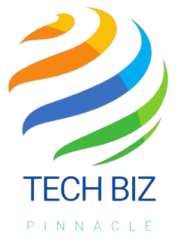Wearable technology, one of the leaders in the top fitness trends in 2023, has taken Reshapes Sports a permanent place in the vanguard of athletic development. Technology is not so much changing the face of sports as it is revolutionizing this dynamic world. It will add that now, with a deeper look at the most recent developments in wearable technology, one sees how such devices are not accessories but play an essential role in thrusting athletes into performances and safety dimensions hitherto unknown.
Putting Data to Work for Peak Reshapes Sports Performance
Wearables provide real-time, quantified data about performance that athletes and coaches use to create highly specific optimizations in performance. Devices outfitted with sensors track everything from heart rate to movement patterns and quality of sleep. This information pinpoints plateaus in performance, and even injury risk, therefore affording tailored training regimens that maximize both safety and effectiveness. In the world of sports betting, other sites, like FanDuel, use that information one step further to create odds and props.
Starting in 2023, wearables have moved a long way from simple fitness trackers. Modern devices run the gamut in everything from GPS trackers that can detail where precisely an athlete has been to smart garments that can read detailed biometrics. which up until recently were only available in highly technical laboratories, a massive leap forward in how sports are both competed and likened.
Prevention of Injuries and Rehabilitation
Perhaps the most critical value will be within preventative care of the most important wearable technologies used within sport. Through the assessment of various vital signs and biomechanics of an athlete, wearables can indicate a possible problem well in advance before it manifests into a more serious injury. For instance, detecting fatigue or an irregular pattern of gait through sensors can immediately alter training and greatly lower the chances of overuse injuries. Ongoing research in injury prevention and rehabilitation also continues to fine-tune the algorithms and accuracy of the sensors, increasing the likelihood of effective forecasting and mitigation of injury risks.
Wearable technology can also greatly help in rehabilitation. Devices that help monitor Reshapes Sports recovery progress and strain will ensure that an athlete returns safely from an injury, without setbacks common with haste or too-aggressive training regimens. This is particularly important in sports medicine, where the real-time data coming from wearables enables personalized rehab programs and shortens the period of recovery to such an extent that athletes can safely and effectively return to peak conditions.
Safety and Ethical Considerations Enhancement
With wearables becoming ubiquitous in sports, there are also amplified concerns regarding privacy and data security. From physiological to location tracking, the range of data collected is highly sensitive. Advanced security frameworks are needed to ensure that information about athletes remains safeguarded against breaches and unauthorized access. Moreover, the ethical use of such technologies becomes paramount. comprehensive regulations are urgently needed, which will ensure they do not compromise the integrity of sport. Fairness should be guaranteed to be observed at every level of competitive sport and also with personal information, ensuring no misuse for ill-gotten advantages or exploitation.
The Role of AI and Machine Learning
The integration of AI and machine learning into wearable technology ushers in an evolution of a new kind in sports analytics. Processing rich datasets from wearables, AI can predict injuries, work out personalized training programs, and even develop personalized nutrition plans. Hence, the coach and the athlete will make decisions by informed judgment, finetuned by each individual’s physiological profile based on data-driven insights. This degree of personalization is the game-changer in sports medicine
Overview of Global Trends and Market Growth
The sports-related wearable technology market is growing at an exponential rate, driven by an ever-growing awareness of health and fitness, and by an exponentially growing demand for data-driven athletic strategies. Growth is Reshapes Sports currently led by North America, with Europe and Asia-Pacific regions following closely behind. This increase reflects a broader trend in numerous sports toward technology-enhanced training environments, from amateur leagues to professional settings. This global shift underlines the integration of technology into sports and also points out that this market has the potential to serve health and performance optimization with innovative sporting technologies.
Visions of Sports Technology: What’s to Come
The trajectory of sports technology is set toward a connected, data-integrated future, with wearable technology right in the middle. Anticipated improvements in sensor technology are likely to drive a new generation of devices able to measure deeper and more granular elements of health, including mental well-being, muscle recovery, and general athletic well-being. Moving forward, technology and sport will be even further interlinked in an ever more integral way in how athletes will continue to train, compete, and recover.
Conclusion
The trajectory of wearable technology in sports has indeed been one of steep ascendancy, powered literally by unending innovation and an insatiable quest for a competitive edge, enhanced safety protocols being no less in importance. As this technology continues to mature, its impact on sports can only deepen further, probably to the very point of redefining norms and practices across levels of athletic performance. Moving into the future, as advancements continue, such wearables promise to improve athlete performance, safety, and overall sports experience.

